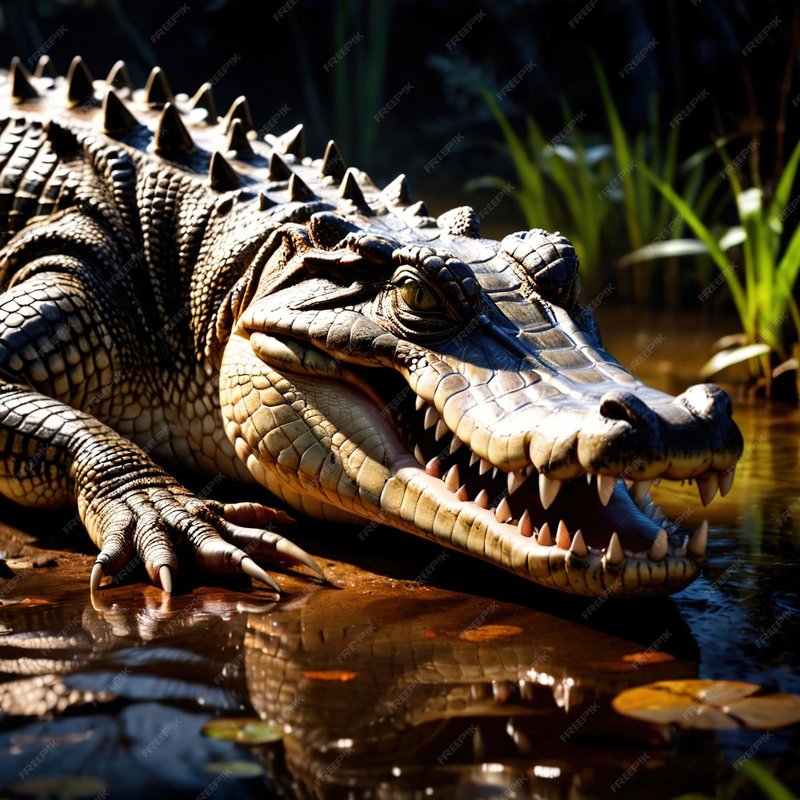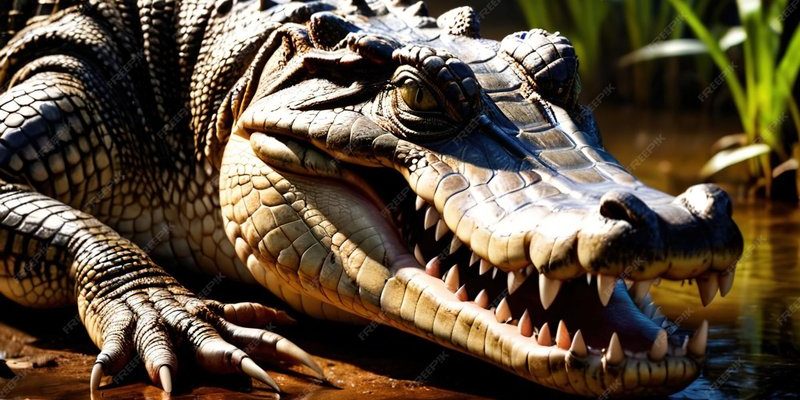
Understanding the crocodile’s role is like piecing together a puzzle. Each part of the ecosystem interacts, forming intricate connections that sustain life. When we look closely, we see how crocodiles fit in—not just as the top predators but as valuable players in their watery realm. So grab your coffee, and let’s break down how these magnificent creatures influence their surroundings.
Crocodiles as Apex Predators
Crocodiles are often referred to as *apex predators*. This means they sit at the top of the food chain without any natural enemies. Their role as apex predators is vital for maintaining the health of aquatic ecosystems. If you visualize a food web, you’ll see that crocodiles help regulate the populations of various species below them. By preying on fish, birds, and even other mammals, they help keep these populations in check.
Here’s the thing: when certain species grow too numerous, they can overconsume resources like plants and smaller fish. This leads to imbalances in the ecosystem. Crocodiles, by controlling these populations, allow for a diverse and thriving environment. It’s a bit like a see-saw; when one side is too heavy, everything collapses. Crocodiles keep the balance perfect.
Moreover, their hunting habits also ensure that weaker or sick animals are culled from the population. This acts as a natural selection process, helping to enhance the overall health of the species in their ecosystem. When healthy populations thrive, you’re likely to see a vibrant and resilient habitat.
The Role of Crocodiles in Biodiversity
You might be wondering: how do these reptiles contribute to biodiversity? Well, by controlling the population of various species, crocodiles encourage a greater variety of life in their environment. This diversity isn’t just beneficial; it’s crucial, as it contributes to ecosystem stability. More diverse ecosystems are better at withstanding diseases, pests, and changing conditions.
Crocodiles also create habitats for other creatures. Their nesting sites and the burrows they dig can serve as homes for fish and amphibians. When they get in and out of the water, they stir up sediment, which can benefit aquatic plants. These plants play an essential role in filtering pollutants and providing oxygen to the water, so crocodiles are supporting life at multiple levels.
Additionally, many smaller predators and scavengers benefit from the leftovers of crocodile meals. After a crocodile has fed, other animals, like vultures and hyenas, will come along to feast on what’s left. It’s nature’s way of recycling!
Impact on Water Quality
Ever considered how crocodiles affect water quality? Their presence in a habitat can significantly influence this. Crocodiles help maintain healthy ecosystems by regulating vegetation and contributing to the nutrient cycle. When they hunt, they often target sick or weak animals. This not only maintains species health but also ensures that dead organic material is removed quickly.
When crocodiles digest their food, they excrete waste that is rich in nutrients. These nutrients can be beneficial for the aquatic environment, promoting algal growth and supporting other water-dwelling plants. Imagine a garden where everything flourishes because of a little extra compost; that’s what crocodile waste does for their watery world.
However, if crocodile populations decline, the natural balance shifts. The nutrients may become scarce, leading to a decrease in plant life and, ultimately, a decline in water quality. So, in a weird way, crocodiles are like nature’s water managers, ensuring that life thrives in their environment.
Crocodiles and Their Role in Habitat Creation
Crocodiles also shape their habitats directly. When they dig their nests or create pathways in riverbanks, they inadvertently create spaces for other species to thrive. These shallow pockets can become homes for fish, frogs, and even birds. It’s like a designer creating spaces—every action they take has a purpose.
Furthermore, the hollows and channels created by crocodiles can alter the flow of rivers and lakes. This change can lead to new habitats forming, allowing various plant and animal species to colonize. By shaping their environment, crocodiles support an intricate web of life that relies on each other for survival.
Not only do these changes enrich the ecosystem, but they also make it more resilient to environmental challenges. A diverse and robust habitat can withstand floods, droughts, or other upheavals better than a fragile one. Crocodiles, through their instinctual behaviors, play a pivotal role in creating and maintaining these vital spaces.
Cultural and Economic Importance
You might not realize it, but crocodiles have cultural and economic significance, too. Many communities living near crocodile habitats view these reptiles with reverence. In some cultures, they symbolize strength and resilience, becoming integral parts of local folklore and traditions.
Economically, crocodiles can be a source of income. In some areas, crocodile farming has become a valuable business, providing meat and leather. This not only supports local economies but also fosters conservation efforts. When people see a direct benefit from protecting crocodiles and their habitats, they’re more likely to engage in sustainable practices.
Moreover, ecotourism thrives in regions where crocodiles naturally occur. Tourists flock to see these magnificent creatures in their environments, bringing revenue to local communities. This tourism helps raise awareness about the importance of conserving crocodiles and their ecosystems, creating a ripple effect of appreciation and protection.
The Role of Education and Conservation
Conservation efforts for crocodiles aren’t just crucial from an ecological standpoint; they also promote education and awareness. Many organizations work tirelessly to protect these creatures while educating the public about their importance. Through educational programs and guided tours, people can learn about the vital roles crocodiles play in their ecosystems.
These educational initiatives can foster a sense of responsibility in communities, encouraging them to take action to protect their local wildlife. When people understand that crocodiles are more than just predators, they can appreciate their contributions to the ecosystem.
In addition, conservation strategies often involve restoring habitats that support crocodiles. This not only benefits the crocodile population but also enhances biodiversity. It’s a win-win situation for both wildlife and humans.
Crocodiles may be fierce predators, but their role in their ecosystems goes far beyond that. From balancing populations to enhancing biodiversity, maintaining water quality, and even influencing economies, crocodiles are essential to the health of their environments. It’s easy to overlook their contributions, but as we’ve seen, they are vital players in the intricate web of life.
As we continue to learn about the role of crocodiles in their ecosystems, it becomes increasingly clear that we need to protect them. Conservation efforts are essential not just for the crocodiles themselves but for the entirety of their ecosystems. By preserving these incredible reptiles, we’re also safeguarding the rich tapestry of life they help support. So, the next time you hear about crocodiles, remember: they’re not just lurking in the water; they are the backbone of their habitats.

